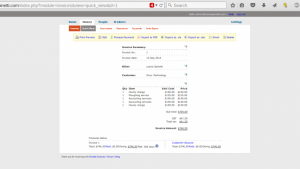The March team recently sat down for a search engine optimization (SEO) training boot camp with startup marketer and SEO consultant drew Wallace (the lowercase “d” is intentional and drew’s personal preference) to discuss how to better utilize SEO to benefit our clients.
SEO is the practice of manipulating content to improve a website’s ranking in search engines like Google, Bing or Yahoo. SEO might seem complicated at times with algorithm updates and constant changes to the ‘formula for success,’ but it really is only a matter of answering a few simple questions for your users, a concept which has been around for forever.

Just like the phone book, in which company names that start with the letter ”A” see the most success just by being the first result on the first page, optimizing your website and content online with key terms can mean your company comes up on page one of the Google search results.
Here are three tips we learned that can help clients better optimize their content for Google.
1. Think Like Google
When considering potential search questions, Google categorizes whatever we seek as three things: information, navigation or a transaction. This can be a useful way to think about the type of content you write on your blog, website or social channels. While answers can often overlap, in a perfect world, your website is optimized correctly to address the right questions.
2. Use Metadata for Video
When it comes to video capabilities, Google is like a 4-year-old watching a movie, drew explained. More often than not, they can remember one song from the film, but the rest of those 90 minutes are completely gone.
What did he mean? When a video is uploaded to YouTube, Google can recognize the metadata around a video – the author name, the camera used to shoot the video, the file size, its title, and more – but what isn’t written in the actual description text isn’t known. Google can’t read a video and therefore can’t understand the video.
As the YouTuber uploading content, we have to help Google. The description we include with the video will carry more weight than the name of the video. Even the comments that stream in around the video can help. So to optimize your video for Google, you need to put as many words around it as possible. And when sharing the video to different networks, use their native metadata, whether it’s pins, links or hashtags.
3. Write Original Work
This is a given, but important rule: Google likes – and rewards – unique content. Writing about the same topic in a different way is fine, but Google actually penalizes you for any duplicated content that it finds. Even press releases posted on company websites should help to boost SEO. However, if you’re posting said release on a wire service before putting it on your website, the wire service will likely be credited as the original publisher (and get the related SEO benefits) even though it’s your content.
While many marketers have made studying Google a pastime, and these tips and tricks may seem obvious to some, it’s important to remember that a few tried-and-true best practices are often much more effective for your site’s SEO than any complex tricks. Small and large businesses alike can benefit from keeping these best practices in mind.

Want to learn more about how to leverage PR for marketing – and vice versa? In The Evolution of PR, Content Marketing and Blogging, we cover:
– The ongoing changes in the world of PR
– The principles of content marketing for tech companies
– Important blogging strategies
– How to use press releases for more than just brand-building
(218)
Report Post







